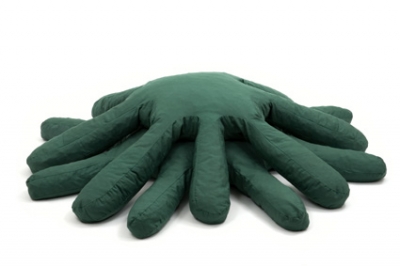Works by Fernando & Humberto Campana 1989-2009
“He is greatest who has the energy to be naive,” claimed René Crevel in a manifesto back in 1924. The Parisian Surrealists (and they include Crevel) may long since be history, but their belief in the power of dreams and the imagination strongly influenced the avant-garde of the early 20th century. Individual aspects of that attitude are definitely alive and kicking in the works of Fernando and Humberto Campana: The art-peaces, the furniture, installations and everyday objects created by the Brazilian designers stand out for their untrammeled creativity. Sensory appeal and ugliness, beauty and misery meld in their works and are expressed in their own intuitive approach, their blend of dreams and personal experiences. The two brothers do not allow themselves to be thrown off by conventional barriers or trends when exploring the boundaries of art and design, craftsmanship and mass production. Their naïve innocence and spontaneity – and for over two decades now they have relied on these qualities to tap new areas – makes them worthy successors to the Surrealists – and two of the most stunning figures in contemporary design.
High-tech and hand-made
“It would be wrong, in my eyes, to use software when developing an idea,” says Humberto Campana, and Fernando, his eight years younger brother, adds: “In Brazil there is a great crafts tradition. We attempt to tap this potential in our work. We are both able to work with our hands and thus start out with life-size prototypes.” Furniture made of cotton cords or paperboard, brush heads or drain heads have made the Brazilians’ favela style famous in the international design community. Yet the Campanas originally wanted to become sculptors: Humberto gave up his job as a lawyer and Fernando started out studying architecture before likewise moving on to art. The feel for simple materials that they encounter on the streets of São Paolo has since become the crux of their work. This is also evidenced by less well-known, marvelously improvised pieces such as the “Estela” (1997) table-lamp (two everyday non-slip mats hung over a thin steel frame) or the “Inflável” (1995) side-table, which consists of two pizza trays with inflatable PVC foil as the body. It’s a one-off, like many of Fernando and Humberto Campana’s designs, and was not commissioned by a client. Some of these one-offs, such as the famous Favela Chair, dozed away for years in Estudio Campana and were at most produced in small series by hands – until the Europeans discovered them and marketed them the world over in revised versions. Humberto Campana suggests that their approach is characterized by its “human touch”. Here, craftsmanship and high technology, traditions and design are not opposites but complementary. “Hand-made high-tech,” is how Fernando charmingly describes the method, with a smile.....
Text: Sandra Hofmeister

